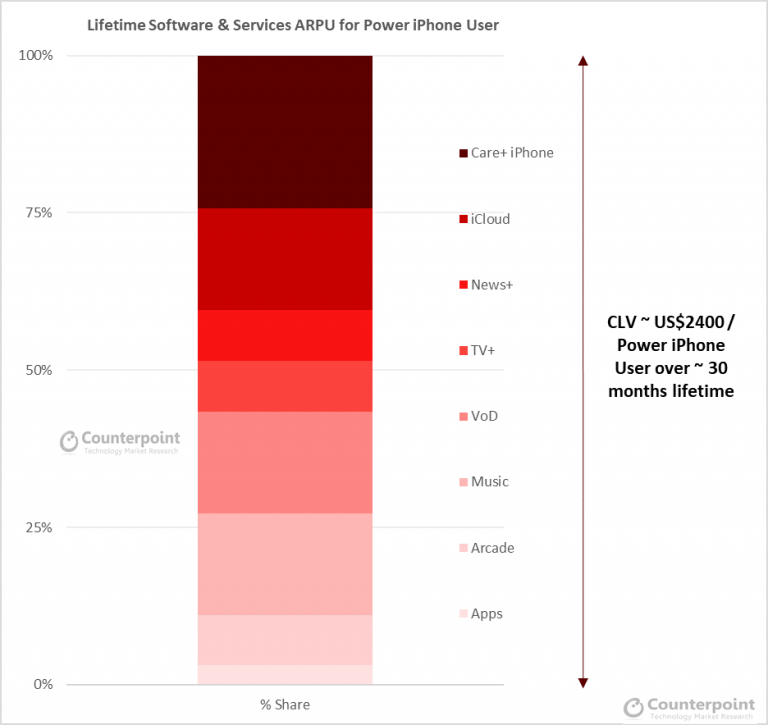The next-generation iPhone SE has been launched after many rumors and leaks over the last three years. The device is a successor of the previous generation iPhone SE launched in March 2016. According to Counterpoint Research, we expect 2020 shipments of the new iPhone SE to exceed 15 million units driven by the lower price point and best-in-class A13 Bionic chipset, which is also used in the iPhone 11 series models.
The device was initially expected to launch during March 2020, but the launch was delayed due to factory shutdowns in China amid the ongoing COVID-19 outbreak. However, factories in China are nearing full capacity again. Apple and its manufacturing partner have done an admirable job bringing this device to market given that Chinese factories were closed for almost two months during the factory ramp-up phase. This is also an indication that upcoming Apple launches may also adhere to expected launch timelines, but we will have to wait and watch.
4G LTE iPhone Amid 5G Noise
While many markets have shifted focus to the 5G smartphone race, Apple delivers one last shot at a mid-range 4G LTE before finally shifting towards a 5G-heavy portfolio. Global network operators are focusing on the faster throughput speeds and the better economics of 5G networks, but we can’t overlook the fact that there remain many hurdles and work to be done. These include spectrum acquisition, investments for tower upgrades, and for years we will see patchy 5G coverage in many regions. Apple will have a 2-3-year window before a majority of 4G LTE users finally migrate to a 5G network, even in the developed markets. The iPhone SE taps this window of LTE opportunity for Apple. By foregoing 5G, Apple allowed the device to be priced at $399 instead of at least $450. It also would have been challenging to fit the extra 5G components into the SE’s tight, aesthetic 4.7” package. Finally, with the latest A13 Bionic CPU, Wi-Fi 6, and a modem that supports GB LTE, it will probably feel sufficiently powered to most users, even though it lacks 5G. The device is likely to be a mid-range “cash cow” for Apple for the next 2-3 years.
A13 Bionic Chipset to Drive the Consumption of Apple Services
The new Apple iPhone SE has a 4.7-inch LCD screen, Touch ID fingerprint recognition, and a design similar to the iPhone 7 and 8 series, with a single camera on the back. What makes iPhone SE 2020 stand apart from the crowd is the A13 Bionic chip. Having an A13 bionic chip inside the iPhone SE means that it now has one of the best-in-class chipsets, which is comparable or better than many Android flagships. Apple’s A13 was a large upgrade over the A12 chipset used in iPhone XR models. It is based on the 7nm chip architecture which is more optimized for machine learning operations. But why would Apple put its best-in-class chipset in a mid-range device? The answer:
- In Q1 FY20, Apple’s revenue hit an all-time quarterly high of $91.8 billion, up 9% YoY for the three months ended Dec 2019. Out of the total Q1 FY20 revenue, $12.7 billion came from its service segment which accounted for 13.8% of the total revenue.
- The old generation Apple iPhone 6S/7/8 models don’t have the hardware to support the latest services while delivering best-in-class user experience.
- Apple has tested its price elasticity and realized that marginally aggressive pricing can potentially generate a much higher “customer lifetime value (CLV)” over a period of 24-30 months.
- The A13 Bionic chipset will enable these users to get a taste of new services. 4K video recording, Smart HDR, Gigabit-class LTE and Wi-Fi 6 will act as a backbone to drive the overall consumption of services such as Apple Arcade, AR Apps, Apple TV+, Apple Music, while driving faster consumption of iCloud.
- According to Counterpoint, Apple can potentially generate a Customer Lifetime Value (CLV) of US$2,400 over a period of 30 months from a “power” iPhone user with the latest hardware, subscribing to its existing and new Apple services.

Source: Counterpoint Research, Ecosystem Analysis (2019)
Capturing the Mid-Range Demand with a Lean Portfolio
Although the market is rapidly shifting towards higher device specifications (including >6-inch display, multi-camera setups, 3D face unlock, AI features), there is still a segment of consumers who still feel more secure with a fingerprint unlock and a screen size that fits well in the palm. On top of that, some of these consumers are previous generation Apple users who are nearing the end of their device life cycle. These users are seeking high brand value with good performance without paying $1000 or more – especially in world in which normal economics have been altered by the coronavirus.
Apple iPhone SE will consolidate the demand for existing older generation iPhone 6/7/8 series models towards a single device – iPhone SE. This will also enable Apple to maintain a leaner 4G LTE portfolio while it transitions to 5G. Meanwhile, other global OEMs will face stronger competition from Apple in the mid-range. For example, iPhone SE will compete strongly with Samsung’s Galaxy A series, LG’s ThinQ series, Motorola Z series, and the upcoming Pixel 4a series.
North America, Europe, and Japan to be Primary Target Markets
A budget category Apple device is often considered as a device targeted for Asian and Latin American markets. However, these markets have shown modest uptake of existing Apple devices in the $400-$600 price band in the past. The aspirational value of the Apple brand remains high in these markets, but these markets have remained highly competitive and consumers tend to lean towards buying a device that offers higher specifications. The consumers in these markets also pay a significantly higher cost for Apple devices due to additional customs duty, currency fluctuations, supply issues, and other local taxes. For example, Apple iPhone SE is priced at $550 (approximately) in the Indian market. So iPhone SE may still end up competing in the premium category in these markets. Having said that, the iPhone SE may still manage to gain significant traction given its latest hardware.
Therefore, the primary target market of iPhone SE will be North America, Europe, and Japan. These are primarily the same markets where the iPhone 7, 8 as well as the iPhone XR series continue to rank among the best-selling models. But now, the availability of the new iPhone SE may leave some prospective iPhone XR buyers confused, as they may end up paying more but end up with an older A12 Bionic chipset. Also, the timing of the iPhone SE launch is not favorable. Carrier stores in North America, Europe and some other parts of the world remain closed due to the COVID-19 lockdown since mid-March 2020. This means Apple may lose out on some initial launch push, but sales will gradually pick up in H2 2020 if the COVID-19 situation continues to improve.
Overall, the device maintains a fine balance among device specifications, design, and pricing while keeping in mind the aspirations of a certain set of consumers. This will entice the mid-range consumers to upgrade without paying the premium cost for a new device while Apple gets an opportunity to capture more value over the lifetime of the device. At last, Apple should be able to capitalize upon its stellar hardware integration and the design “nostalgia” which lasted for more than three years and became the hallmark of Apple’s design finesse.

